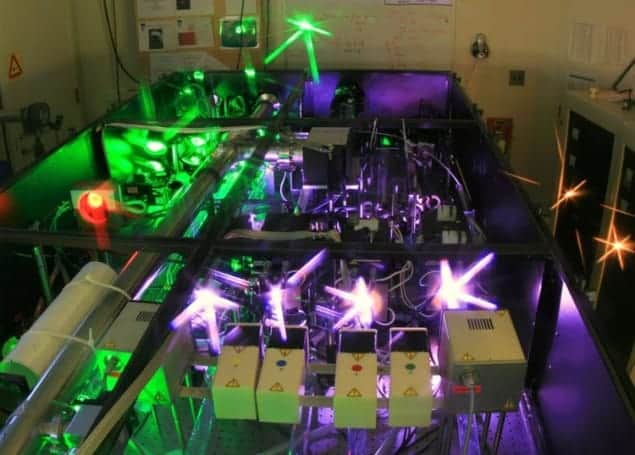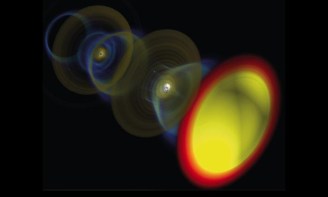
A compact source of high-quality X-ray pulses has been unveiled by an international team of researchers. The group claims that the source – which is contained in a vacuum chamber about 1 m3 – produces intense and highly coherent X-ray pulses that rival those produced by “wiggling” electrons in large and extremely expensive particle accelerator facilities.
The source was created by Zulfikar Najmudin and colleagues at Imperial College London along with researchers at the University of Michigan, Instituto Superior Técnico in Lisbon and Ecole Polytechnique Palaiseau in France.
The device creates X-rays using the “plasma wakefield” effect whereby an intense laser pulse is fired into gas to create a plasma. As the pulse travels through the gas, its electric field separates electrons from atoms. This creates an extremely large electric field in the wake of the pulse, which accelerates electrons. As the wake collapses, electrons are “wiggled” violently, causing them to radiate X-rays.
Broad energy distribution
The team made the plasma at the University of Michigan using Hercules – a petawatt laser that creates some of the most intense laser pulses ever. The pulses are fired into a jet of helium gas and X-rays are created in a volume about 1 µm and propagate in the direction of the laser pulse. They are produced with a broad energy distribution and have an average energy of about 10 keV with some as energetic as 100 keV. According to the team, the X-ray source is 1000 times brighter than previous schemes for generating X-rays in “plasma wigglers”.
The team evaluated the quality of the X-ray pulses by using them to image a number of microscopic test patterns. They concluded that pulses have a large degree of spatial coherence – which makes them well suited for studying the structural properties of materials on the nanometre scale. In addition, the pulses last only a few femtoseconds, which means that they can be used to study processes such as atomic and molecular interactions that occur on very short timescales.
“We think a system like ours could have many uses,” said Najmudin. “For example, it could eventually increase dramatically the resolution of medical imaging systems using high energy X-rays.”
Large laser required
However, the technique has one important shortcoming at the moment – it requires an extremely powerful and relatively large laser to work. While the Hercules laser is smaller than an accelerator facility, it still occupies several rooms at the University of Michigan.
“High-power lasers are currently quite difficult to use and expensive, which means we’re not yet at a stage when we could make a cheap new X-ray system widely available,” admitted Najmudin. “However, laser technology is advancing rapidly, so we are optimistic that in a few years there will be reliable and easy-to-use X-ray sources available that exploit our findings.”
The work is described in Nature Physics DOI:1038/NPHYS1789.



